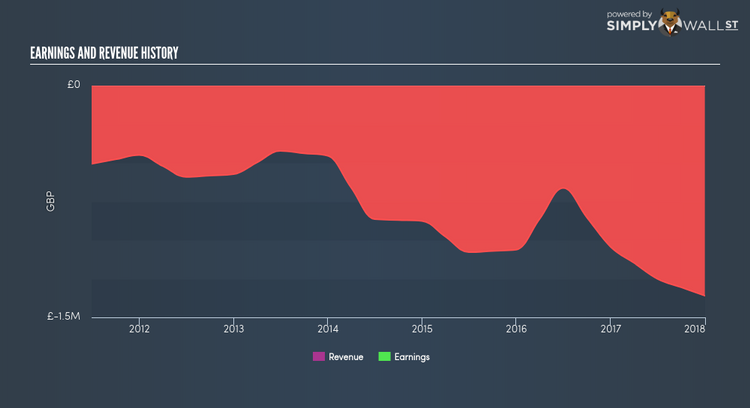Greatland Gold plc (LON:GGP): Risks You Need To Consider Before Buying

For Greatland Gold plc’s (AIM:GGP) shareholders, and also potential investors in the stock, understanding how the stock’s risk and return characteristics can impact your portfolio is important. The beta measures GGP’s exposure to the wider market risk, which reflects changes in economic and political factors. Not every stock is exposed to the same level of market risk, and the market as a whole represents a beta value of one. A stock with a beta greater than one is considered more sensitive to market-wide shocks compared to a stock that trades below the value of one.
Check out our latest analysis for Greatland Gold
An interpretation of GGP’s beta
Greatland Gold’s five-year beta of 1.77 means that the company’s value will swing up by more than the market during prosperous times, but also drop down by more in times of downturns. This level of volatility indicates bigger risk for investors who passively invest in the stock market index. Based on this beta value, GGP may be a stock for investors with a portfolio mainly made up of low-beta stocks. This is because during times of bullish sentiment, you can reap more of the upside with high-beta stocks compared to muted movements of low-beta holdings.
Does GGP’s size and industry impact the expected beta?
A market capitalisation of UK£16.81M puts GGP in the category of small-cap stocks, which tends to possess higher beta than larger companies. Furthermore, the company operates in the metals and mining industry, which has been found to have high sensitivity to market-wide shocks. As a result, we should expect higher beta for small-cap stocks in a cyclical industry compared to larger stocks in a defensive industry. This is consistent with GGP’s individual beta value we discussed above. Next, we will examine the fundamental factors which can cause cyclicality in the stock.
Is GGP’s cost structure indicative of a high beta?
An asset-heavy company tends to have a higher beta because the risk associated with running fixed assets during a downturn is highly expensive. I examine GGP’s ratio of fixed assets to total assets to see whether the company is highly exposed to the risk of this type of constraint. Given that fixed assets make up an insignificant portion of total assets, GGP doesn’t rely heavily upon these expensive, inflexible assets to run its business during downturns. Thus, we can expect GGP to be more stable in the face of market movements, relative to its peers of similar size but with a higher portion of fixed assets on their books. However, this is the opposite to what GGP’s actual beta value suggests, which is higher stock volatility relative to the market.
What this means for you:
You may reap the gains of GGP’s returns during times of economic growth by holding the stock. Its low fixed cost also implies that it has the flexibility to adjust its cost to preserve margins during times of a downturn. I recommend analysing the stock in terms of your current portfolio composition before deciding to invest more into GGP. In order to fully understand whether GGP is a good investment for you, we also need to consider important company-specific fundamentals such as Greatland Gold’s financial health and performance track record. I urge you to complete your research by taking a look at the following:
Financial Health: Is GGP’s operations financially sustainable? Balance sheets can be hard to analyze, which is why we’ve done it for you. Check out our financial health checks here.
Past Track Record: Has GGP been consistently performing well irrespective of the ups and downs in the market? Go into more detail in the past performance analysis and take a look at the free visual representations of GGP’s historicals for more clarity.
Other High-Performing Stocks: Are there other stocks that provide better prospects with proven track records? Explore our free list of these great stocks here.
To help readers see pass the short term volatility of the financial market, we aim to bring you a long-term focused research analysis purely driven by fundamental data. Note that our analysis does not factor in the latest price sensitive company announcements.
The author is an independent contributor and at the time of publication had no position in the stocks mentioned.

